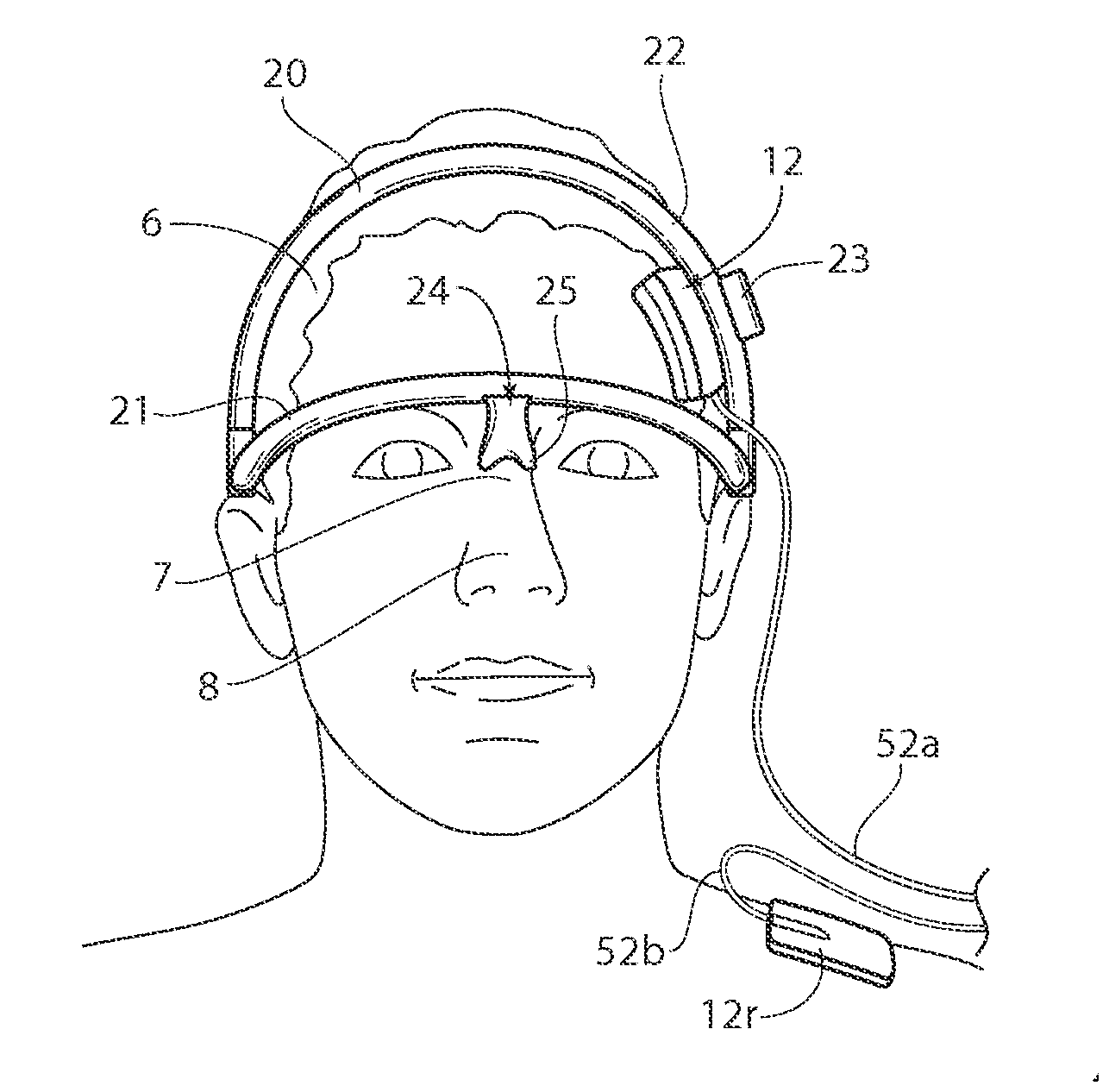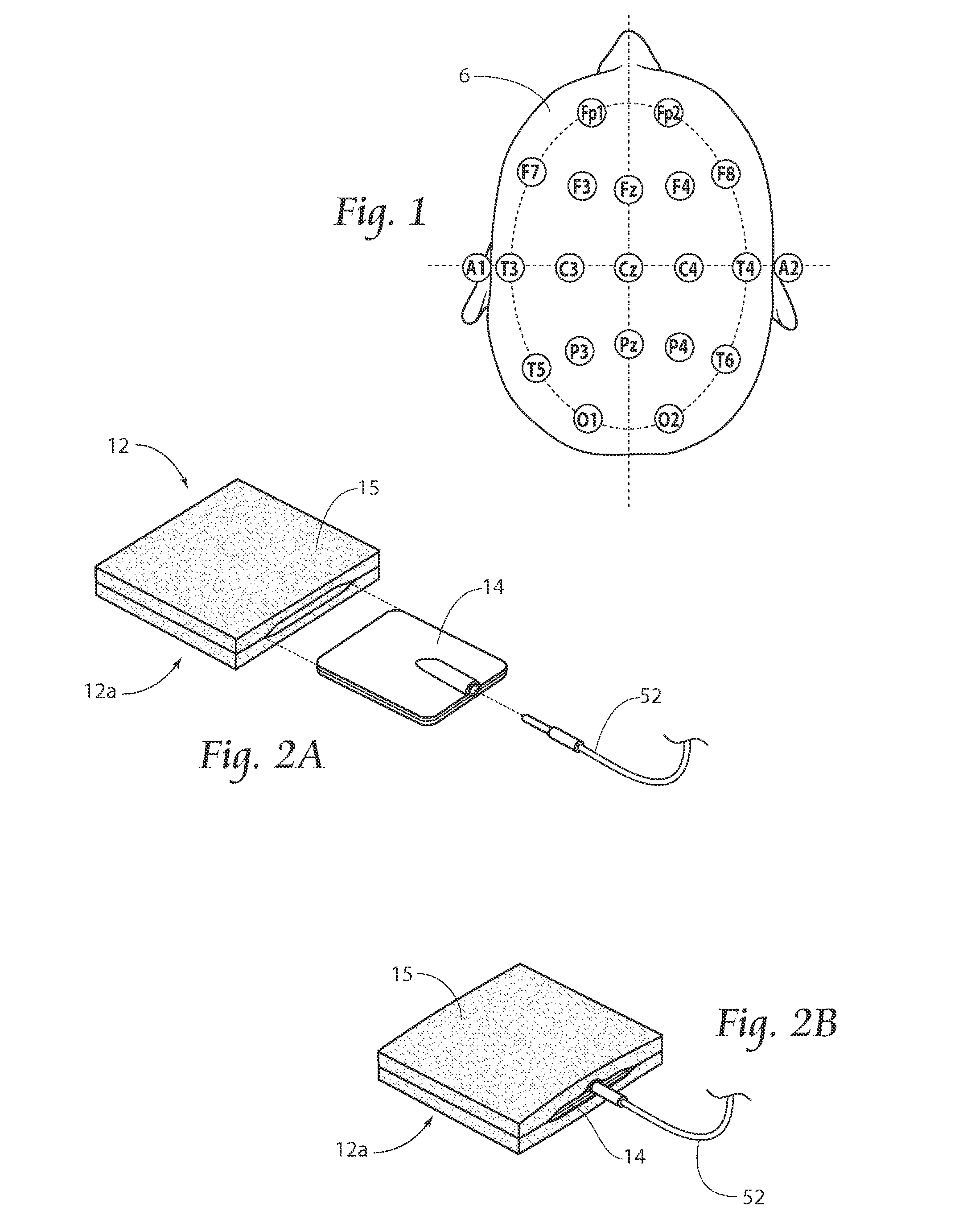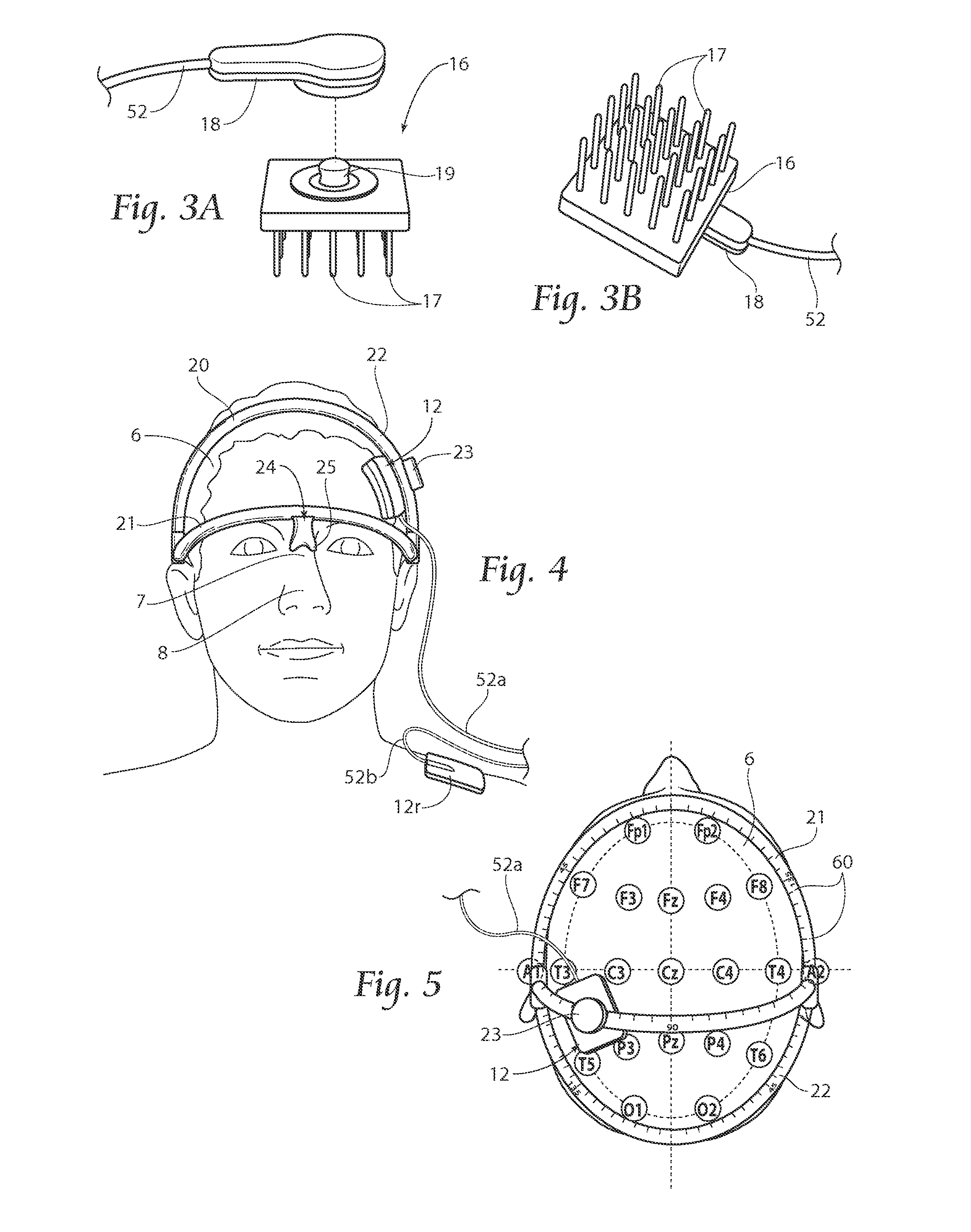Systems for and methods of transcranial direct current electrical stimulation
a direct current and transcranial technology, applied in the field of transcranial direct current electrical stimulation systems and methods applied to animals, can solve the problems of reducing the quality of life of patients, no cure for tinnitus, anxiety, etc., and achieve the effect of improving the use of tdcs
- Summary
- Abstract
- Description
- Claims
- Application Information
AI Technical Summary
Benefits of technology
Problems solved by technology
Method used
Image
Examples
Embodiment Construction
[0035]Although the disclosure hereof is detailed and exact to enable those skilled in the art to practice the invention, the physical embodiments herein disclosed merely exemplify the invention which may be embodied in other specific structures. While the preferred embodiment has been described, the details may be changed without departing from the invention, which is defined by the claims.
[0036]A method according to the present invention includes tDCS for sustained relief of indications such as tinnitus, epilepsy, addiction, depression, stroke, anorexia, pain, and / or the improvement of attention and / or motor learning. The discussion herein focuses primarily on the application for treating tinnitus, but the systems and methods may also be used for the treatment of other indications, including those listed above.
[0037]Treatment methods according to the present invention are non-invasive and can be delivered with a portable device that is quick and easy to use. The proposed methods of...
PUM
 Login to View More
Login to View More Abstract
Description
Claims
Application Information
 Login to View More
Login to View More - R&D
- Intellectual Property
- Life Sciences
- Materials
- Tech Scout
- Unparalleled Data Quality
- Higher Quality Content
- 60% Fewer Hallucinations
Browse by: Latest US Patents, China's latest patents, Technical Efficacy Thesaurus, Application Domain, Technology Topic, Popular Technical Reports.
© 2025 PatSnap. All rights reserved.Legal|Privacy policy|Modern Slavery Act Transparency Statement|Sitemap|About US| Contact US: help@patsnap.com



